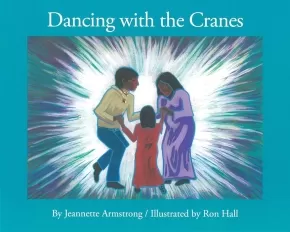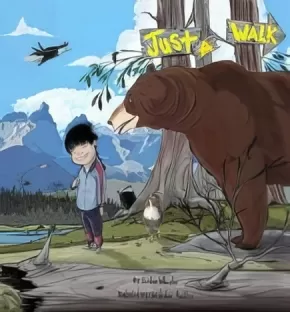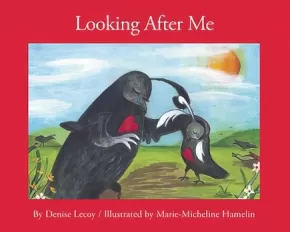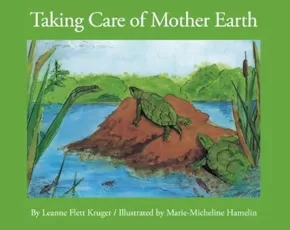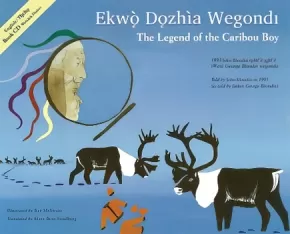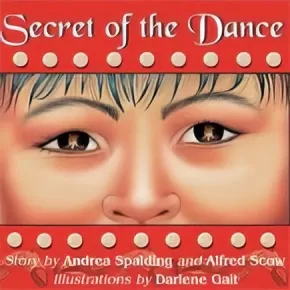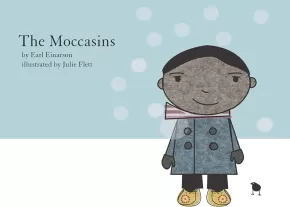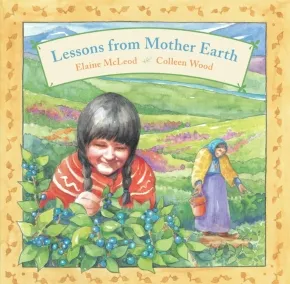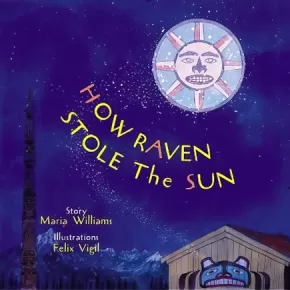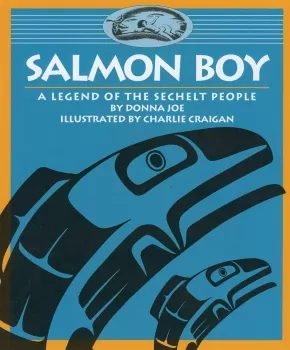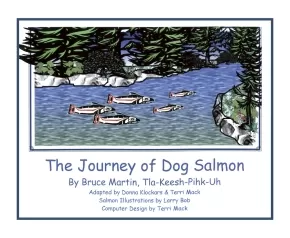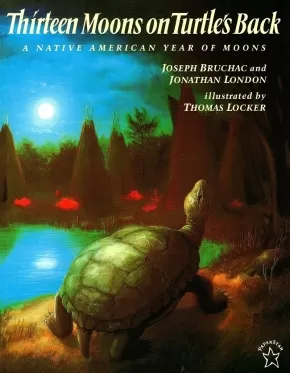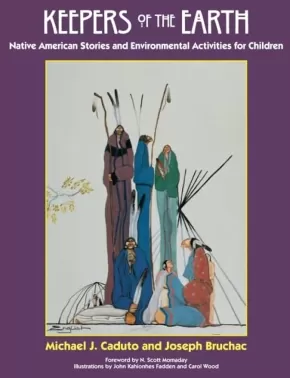
BC - In Our Own Words K - 3 2020
31
-
45
of
48 Results;
Sort By
Go To
of 4
This resource guide has been developed by the First Nations Education Steering Committee (FNESC) with assistance from the BCMOE and support from the Education Partnerships Program of AANDC. It was first published in 2012 and was revised in 2020.
Dancing with the Cranes
$14.95
Artists:
Format:
Paperback
Text Content Territories:
Indigenous Canadian; First Nations; Salish; Interior Salish; Syilx (Okanagan);
ISBN / Barcode: 9781894778701
Synopsis:
Synopsis:
Dancing with the Cranes gives an understanding of birth, life and death. Chi's momma is soon to have a baby, but Chi is having a hard time being happy about it. Chi misses Temma (her grandma), who has passed away. Chi's momma and daddy help ease the pain of losing Temma and help Chi to understand life and death as a part of nature. Chi soon finds herself feeling comforted, knowing Temma will always be a part of her and looking forward to the new baby who will be a part of their lives.
Educator Information
Recommended for 6 to 8.
Additional Information
24 pages | 7.97" x 9.95"
Just a Walk
$12.95
Artists:
Format:
Paperback
Text Content Territories:
Indigenous Canadian; First Nations; Cree (Nehiyawak);
ISBN / Barcode: 9781894778824
Synopsis:
Synopsis:
In Just a Walk, a young boy named Chuck goes for a simple walk that turns into a day of crazy adventure. Chuck encounters animals, fish and birds that lead him on a wild journey through their various habitats.
Jordan Wheeler's whimsical rhyming will capture the young readers attention and Chuck's hilarious predicaments will keep all ages laughing for more.
Written to excite the young readers and to leave a smile on their faces.
Educator & Series Information
Just a Walk is an adaptation of a popular oral presentation developed as an interactive performance for children.
This is the first book in the Chuck series.
Additional Information
32 pages | 8.00" x 8.00"
Looking After Me
$10.95
Format:
Paperback
Text Content Territories:
Indigenous Canadian;
ISBN / Barcode: 9781894778541
Synopsis:
Synopsis:
A sweet story about a little Quail who, through the love of his family, learns life lessons about feelings, emotions and expressing oneself.
Written for children of all backgrounds, with colorful illustrations, this story shares the important message of healthy living.
Educator & Series Information
Recommended for ages 3 to 5.
This book is part of the Caring For Me Series.
Additional Information
20 pages | 10.00" x 8.00" | Paperback
Taking Care Of Mother Earth
$12.95
Format:
Paperback
ISBN / Barcode: 9781894778558
Synopsis:
Synopsis:
B.C. Science Supplementary Resource: K-Physical and Earth Science
Charlie and Grandma are doing chores around the house. While doing the chores, grandma shares loving stories with Charlie on how to take care mother earth.
This series was developed through consultations with health promotion workers and early childhood educators. There are six titles in the series that deal with issues such as healthy eating, safety, dealing with feelings and notions of respect. This series is appropriate for ages three to five, and the books have full-colour illustrations.
Dancing in My Bones
$17.50
Artists:
Format:
Paperback
Text Content Territories:
Indigenous Canadian; Métis;
ISBN / Barcode: 9780920915899
Synopsis:
Synopsis:
Dancing in My Bones, the sequel to the highly successful book Fiddle Dancer, returns us to the story of a young Métis boy named Nolin as he continues to discover his Métis heritage. Lovingly written by Wilfred Burton and Anne Patton and vividly illustrated by Sherry Farrell Racette, Dancing in My Bones will take you on a journey to discover Moushoom's first moose hunt, red lipstick kisses, Uncle Bunny's fiddling, and the return of the "Bannock Jig." But most importantly, by the end of the story, you might feel like you have dancing in your bones!
Includes a CD with English and Michif Narrations of the Story and Fiddle Music!
Educator & Series Information
The trilogy is composed of these three titles: Fiddle Dancer, Dancing In My Bones, and Call of the Fiddle. Dancing in My Bones is the second book in the trilogy.
Michif translations by Normal Fleury.
Additional Information
50 Pages | 27.9 cm H x 21.5 cm W
Jenneli's Dance (8 in Stock)
$12.95
Artists:
Format:
Paperback
Text Content Territories:
Indigenous Canadian; Métis;
ISBN / Barcode: 9781894778619
Synopsis:
Synopsis:
Jenneli is a shy young girl who feels that she is nothing special, until she learns about the Métis Red-River Jig from her grandma. One day, Grandma Lucee enters her into a jigging contest. Jenneli's Dance is a story that instills a sense of pride in the Métis culture, and deals with low self-esteem.
Additional Information
44 pages | 7.94" x 9.02"
The Legend of the Caribou Boy / Ekwò Dǫzhìa Wegondl
$19.95
Artists:
Format:
Paperback
Text Content Territories:
Indigenous Canadian; First Nations; Dene; Tlicho (Dogrib);
ISBN / Barcode: 9781894778718
Synopsis:
Synopsis:
Maintaining the Dene storytelling tradition of passing along the teachings to their children, John Blondin relayed the story of The Legend of the Caribou Boy as he heard it from his father, George Blondin a respected Elder and storyteller. Now written down in dual language the legend is passed on to you. Discover one small part of Dene history and the lessons that have been passed on for generations.
A young boy is having trouble sleeping at night. he is being called to fulfill his destiny, a destiny which lives on today in the traditions and culture of the Dene people and their relationship to the caribou and the land on which they live.
The multimedia CD included allows readers to hear and see the Dogrib legend in Dogrib and English on a Mac or PC computer or insert it into a CD player to listen to the story in either language.
Educator Information
Recommended for ages 6 to 8.
Additional Information
40 pages | 10.00" x 8.00"
Secret of the Dance
$12.95
Artists:
Format:
Paperback
Text Content Territories:
Indigenous Canadian; First Nations; Kwakwaka'wakw (Kwakiutl); Kwicksutaineuk ;
ISBN / Barcode: 9781554691296
Synopsis:
Synopsis:
"Many years ago, when the world and I were younger, my family defied the government."
A boy will never forget witnessing a forbidden Potlatch. In 1935, a nine-year-old boy's family held a forbidden Potlatch in faraway Kingcome Inlet. Watl'kina slipped from his bed to bear witness. In the Big House masked figures danced by firelight to the beat of the drum. And there, he saw a figure he knew. Aboriginal elder Alfred Scow and award-winning author Andrea Spalding collaborate to tell the story, to tell the secret of the dance.
Educator Information
"This story tells of a time when potlatches, ceremonial dancing and the wearing of regalia and masks were forbidden by Canadian law. A young boy, based on Judge Alfred Scow's boyhood story, witnesses the last secret potlatch of this community before the threat of imprisonment caused them to stop dancing." - FNESC, "BC First Nations Land, Title, and Governance"
Additional Information
32 pages | 9.00" x 9.00"
The Moccasins
$12.95
Artists:
Format:
Paperback
Text Content Territories:
Indigenous Canadian;
ISBN / Barcode: 9781894778145
Synopsis:
Synopsis:
This is an endearing story of a young Aboriginal foster child who is given a special gift by his foster mother. Her gift of warmth and thoughtfulness helps her young foster children by encouraging self-esteem, acceptance and love. Written as a simple story, it speaks of a positive foster experience.
Additional Information
16 pages | 8.00" x 6.00" | Paperback
Lessons From Mother Earth
$10.99
Artists:
Format:
Paperback
Text Content Territories:
Indigenous Canadian; First Nations; Tutchone; Northern Tutchone; Na-Cho Nyak Dun;
ISBN / Barcode: 9780888998323
Synopsis:
Synopsis:
This gentle story demonstrates the First Nations' tradition of taking care of Mother Earth.
Tess has visited her grandmother many times without really being aware of the garden. But today when they step out the door, Tess learns that all of nature can be a garden. And if you take care of the plants that are growing, if you learn about them - understanding when they flower, when they give fruit, and when to leave them alone - you will always find something to nourish you.
At the end of the day, Tess is grateful to Mother Earth for having such a lovely garden, and she is thankful for having such a wise grandma.
Elaine McLeod's poetic text and Colleen Wood's gentle watercolors combine to make Lessons from Mother Earth a celebration of nature and life.
Educator Information
Curriculum Connections: Social Studies, Science and Nature.
Additional Information
24 pages | 8.80" x 8.80"
How Raven Stole the Sun (Tales of the People)
$21.95
Artists:
Format:
Hardcover
Text Content Territories:
Indigenous American; Alaska Native; Tlingit;
ISBN / Barcode: 9780789201638
Synopsis:
Synopsis:
A long time ago, Raven was pure white, like fresh snow in winter. This was so long ago that the only light came from campfires, because a greedy chief kept the stars, moon, and sun locked up in elaborately carved boxes. Determined to free them, the shape-shifting Raven resourcefully transformed himself into the chief's baby grandson and cleverly tricked him into opening the boxes and releasing the starlight and moonlight. Though tired of being stuck in human form, Raven maintained his disguise until he got the chief to open the box with the sun and flood the world with daylight, at which point he gleefully transformed himself back into a raven. When the furious chief locked him in the house, Raven was forced to escape through the small smokehole at the top--and that's why ravens are now black as smoke instead of white as snow.
This engaging Tlingit story is brought to life in painted illustrations that convey a sense of the traditional life of the Northwest Coast peoples.
Additional Information
32 pages | 9.50" x 9.60"
Salmon Boy
$12.95
Artists:
Format:
Paperback
Text Content Territories:
Indigenous Canadian; First Nations; Salish; Coast Salish; Shishalh (Sechelt);
ISBN / Barcode: 9780889711662
Synopsis:
Synopsis:
In Salmon Boy: A Legend of the Sechelt People, a young boy is captured by a Chum salmon and brought to the country of the salmon people-a dry land beneath water where "the salmon people walked about the same as people do above the sea." The boy lived with them for one year, and his captivity becomes a source of learning that will ensure the survival of his own people.
After accompanying the salmon people on their run, the Sechelt boy hops out of the river and returns home to teach everything he has learned to his people who, from that time forward, treat the salmon properly and always have enough to eat. The salmon people, now respected by the humans, happily "give their rich flesh to feed the people of the land."
This beautiful story is accompanied by black and white illustrations of the boy and his adventures. Though written especially for children, Salmon Boy, with its simple message of responsibility and respect, will appeal to all ages.
Educator Information
Simple and compelling First Nations drawings illustrate this dynamic story that teaches respect for the environment and describes the life cycle of the salmon.
Series Information
This book is part of the Legends of the Sechelt Nation series.
Additional Information
24 pages | 7.00" x 8.50"
The Journey of Dog Salmon
 $11.50
$11.50

Artists:
Format:
Paperback
Text Content Territories:
Indigenous Canadian; First Nations; Nuu-chah-nulth (Nootka); Tla-o-qui-aht First Nation;
ISBN / Barcode: 9780987967008
Synopsis:
Synopsis:
Dog Salmon is the bully of the river and is taught how important it is to respect others. The story also integrates the natural salmon cycle.
Additional Information
18 Pages | 8.5" x 7" | Paperback | ISBN: 9780987967008
Thirteen Moons On Turtle's Back: A Native American Year Of Moons
$12.49
Format:
Paperback
Text Content Territories:
Indigenous American; Native American;
ISBN / Barcode: 9780698115842
Synopsis:
Synopsis:
To many Native Americans, the 13 cycles of the moon represent the changing seasons and the passage of time. Each moon has its own special name that, while varying among the tribal nations, is consistent with the legend that the 13 scales on Old Turtle's back hold the key to these moons. The authors present 13 poems that take readers through the year, from the "Moon of Popping Trees"--when the "cottonwoods crack with frost"--to the "Big Moon" of the Abenakis. The book's effective design consists of verses in vertical columns at the left of each spread, with the remainder occupied by Locker's ( Family Farm ; Catskill Eagle ) typically lush artwork. His oil paintings are eye-catching in their depth of color reflecting dramatic seasonal changes. Trees, skies and woodland creatures are rendered in vivid hues that combine to produce an enthralling vision. This unusual and intelligent book is an exemplary introduction to Native American culture with its emphasis on the importance of nature.
Additional Infromation
32 pages | 8.00" x 10.25"
Keepers of the Earth: Native American Stories and Environmental Activities for Children
$33.95
Format:
Paperback
Text Content Territories:
Indigenous American; Native American;
ISBN / Barcode: 9781555913854
Synopsis:
Synopsis:
Native American stories combine with related hands-on activities to inspire children with a deep respect and interest in the Earth and in Native cultures in this popular and critically acclaimed book. Keepers of the Earth uses an interdisciplinary approach to introduce environmental concepts to children, aged five through twelve. The activities include theatre, reading, writing, science, social studies, and mathematics, and are designed to engage all of the senses.
Reviews
"Keepers of the Earth is an excellent school resource introducing children to Aboriginal worldviews. The book is comprised of 21 story packages which may be used as teaching tools in the classroom. The stories are divided by subject nature and include three stories about creation, two about fire, one about the earth, one about wind and weather, three about water, two about sky, one about seasons, six about plants and animals, one about life, death, and spirits, and about the unity of earth.... Following each story is a discussion prompt to help teachers explain the story’s context. The discussion prompts relate the story to First Nations traditional worldviews and emphasize mankind’s interconnection with the natural world. Following the discussion prompts, there is a list of questions to encourage student reflection. Some of the questions are focussed more on story comprehension while others encourage children to reflect on the greater meaning of the story and how it relates to their daily life.... Keepers of the Earth offers suggestions for activities to solidify and expand the learning of the story. Activity suggestions include field trips, demonstrations, experimentationand further discussion. Each story is accompanied by at least one activity with recommendations as to which age group tocater the activityto. While most of the activities seem directed at grades 3-8, there are many activities that could suit the needs of older or younger children with little or no modification." - Rachel Yaroshuk, CM Magazine
Educator & Series Information
This book is part of the Keepers Series.
Foreword by N. Scott Momaday.
Additional Information
240 pages | 8.25" x 10.72"
Sort By
Go To
of 4

